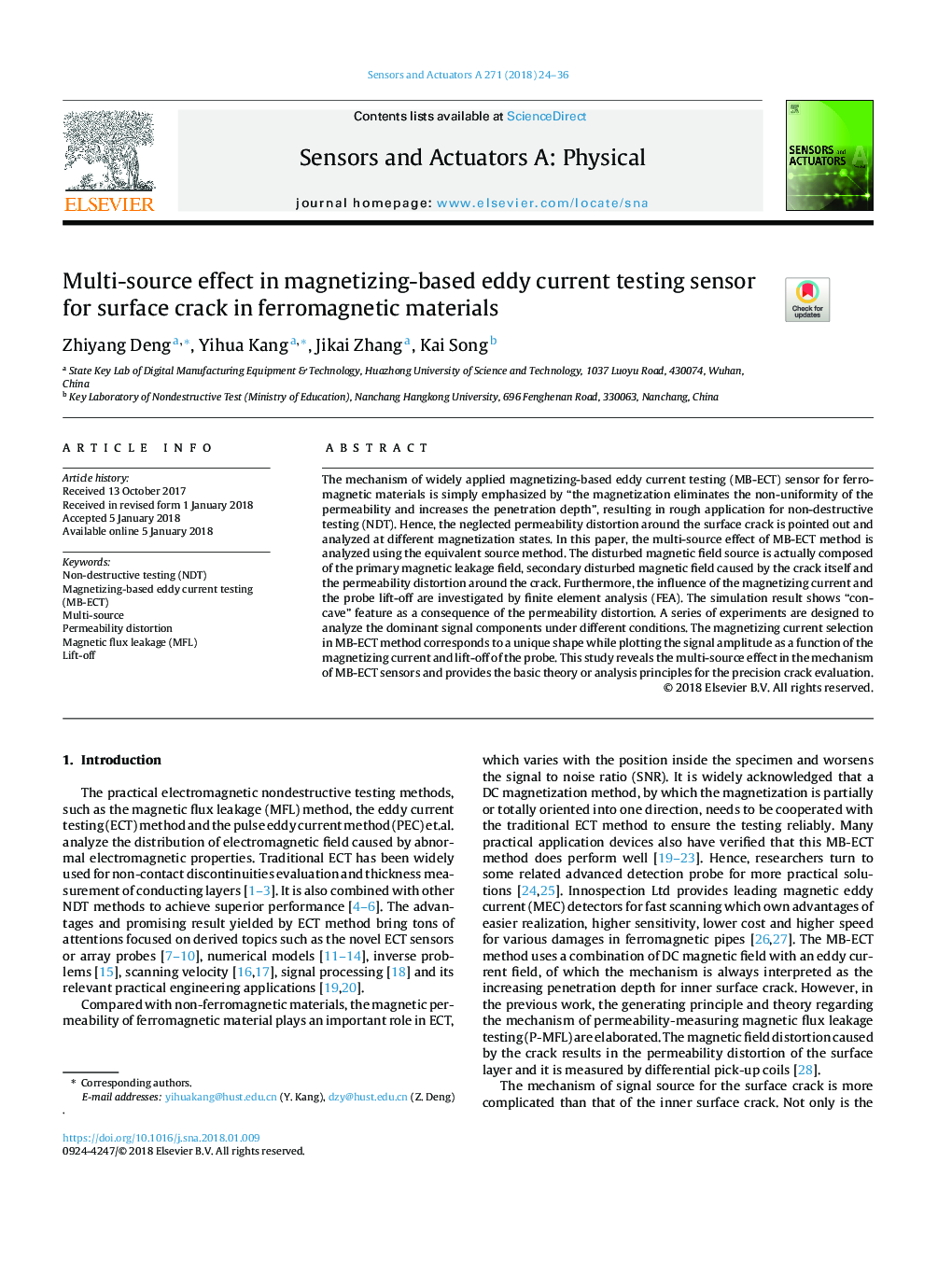| Article ID | Journal | Published Year | Pages | File Type |
|---|---|---|---|---|
| 7133648 | Sensors and Actuators A: Physical | 2018 | 13 Pages |
Abstract
The mechanism of widely applied magnetizing-based eddy current testing (MB-ECT) sensor for ferromagnetic materials is simply emphasized by “the magnetization eliminates the non-uniformity of the permeability and increases the penetration depth”, resulting in rough application for non-destructive testing (NDT). Hence, the neglected permeability distortion around the surface crack is pointed out and analyzed at different magnetization states. In this paper, the multi-source effect of MB-ECT method is analyzed using the equivalent source method. The disturbed magnetic field source is actually composed of the primary magnetic leakage field, secondary disturbed magnetic field caused by the crack itself and the permeability distortion around the crack. Furthermore, the influence of the magnetizing current and the probe lift-off are investigated by finite element analysis (FEA). The simulation result shows “concave” feature as a consequence of the permeability distortion. A series of experiments are designed to analyze the dominant signal components under different conditions. The magnetizing current selection in MB-ECT method corresponds to a unique shape while plotting the signal amplitude as a function of the magnetizing current and lift-off of the probe. This study reveals the multi-source effect in the mechanism of MB-ECT sensors and provides the basic theory or analysis principles for the precision crack evaluation.
Related Topics
Physical Sciences and Engineering
Chemistry
Electrochemistry
Authors
Zhiyang Deng, Yihua Kang, Jikai Zhang, Kai Song,
